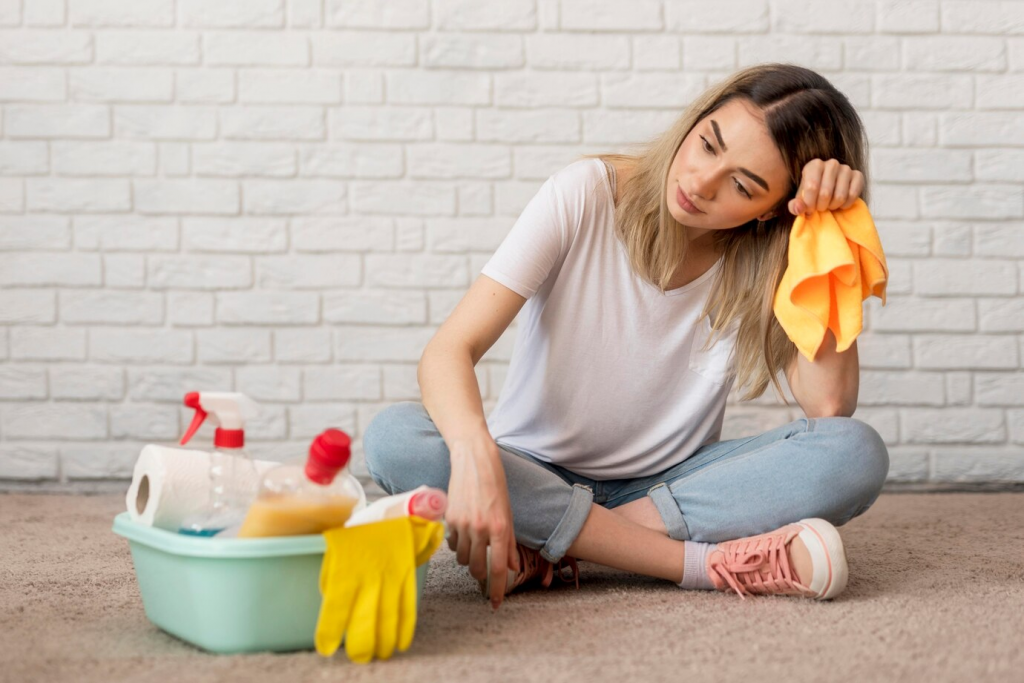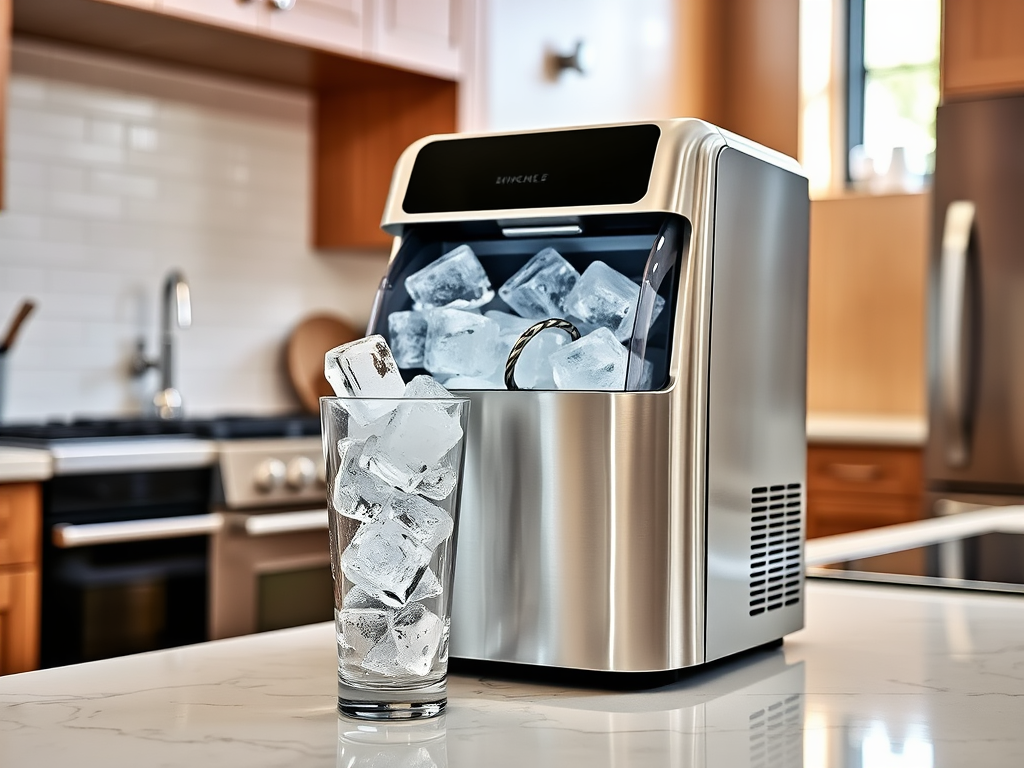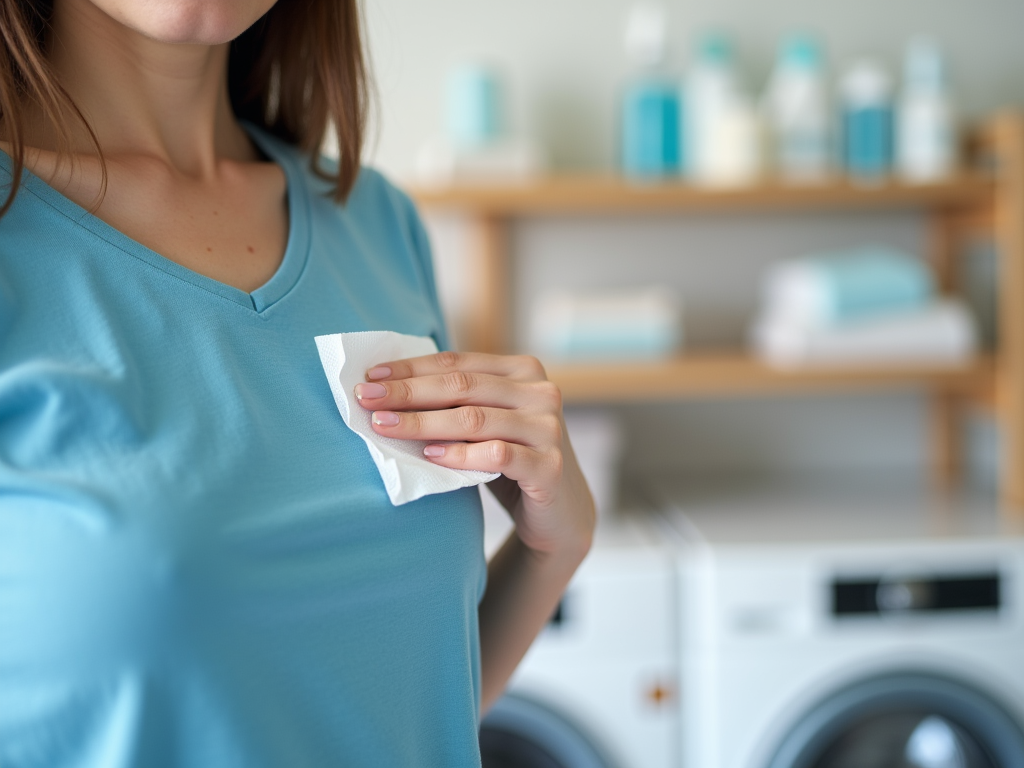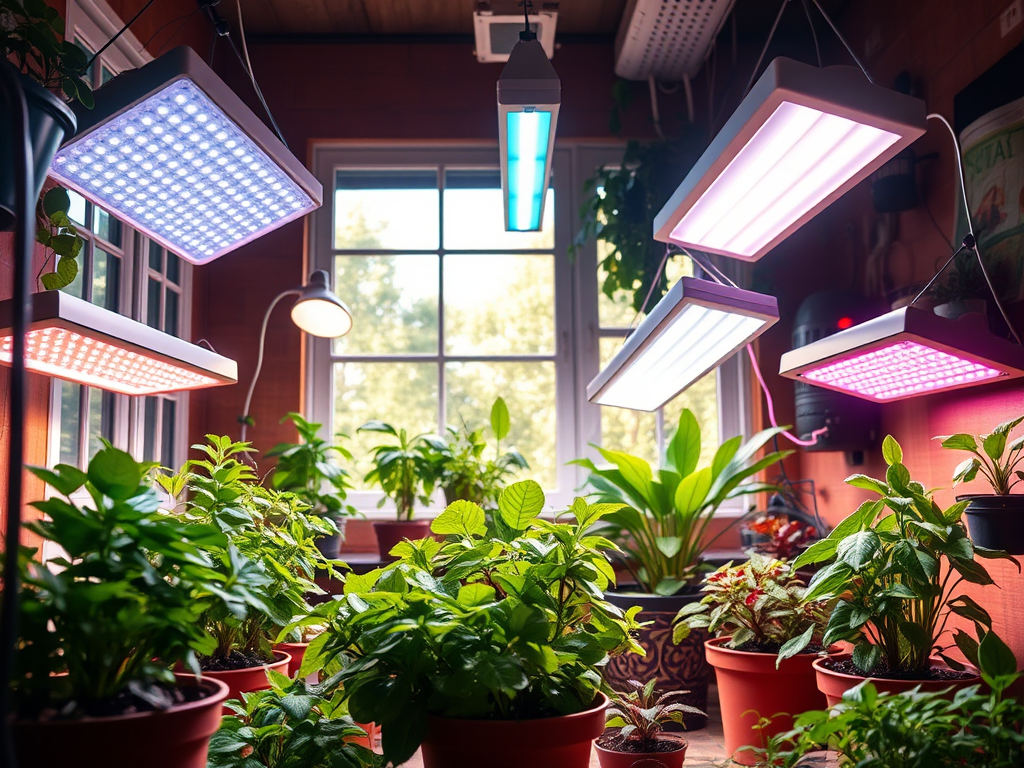Transforming your carpet from a trap for unpleasant odors into a source of freshness is a simple feat when armed with the humble yet mighty bicarbonate of soda, often recognized as baking soda. This household wonder is not only affordable but also remarkably effective as a natural deodorizer, making it the star player in homemade cleaners. In the following guide, you’ll learn how to create your own DIY carpet freshener and discover that maintaining a home that smells good doesn’t require store-bought products. By the time we’re finished, you’ll have all the knowledge to whip up your own homemade recipes, featuring the deodorizing power of baking soda and the scent-boosting magic of essential oils.
What You Need to Know About Bicarbonate of Soda
Bicarbonate of soda, known in many households as baking soda, carries a hidden talent beyond its culinary uses—it is an all-natural, powerful weapon for neutralizing odors. This is because baking soda neutralizes acid-based odors in fabrics and acts as a natural deodorizer, effectively absorbing unpleasant scents. This quality makes it a compelling ingredient for DIY natural rug fresheners and other deodorizer recipes.
Making your own DIY carpet deodorizer powder with baking soda promises more than just efficacy; it is inherently safe and eco-friendly. For those aiming to veer away from harsh chemicals, creating natural homemade carpet fresheners is an ideal solution, ensuring that your living space is not just clean but sustainably fresh.
Safety Measures and Precautions
Before you dive into spreading this natural deodorizer throughout your home, take a moment to consider some key safety measures:
- Spot Test: Always perform a spot test on a small, inconspicuous area of your carpet to ensure the mixture does not damage or discolor your carpet fibers.
- Avoid Dampness: Make certain the carpet is completely dry before application, as baking soda can clump and become difficult to remove when it contacts moisture.
- Pets and Children: If you have curious pets or young children, make sure they do not ingest the baking soda. While it’s safe in small quantities, large amounts can be harmful.

Preparing Your DIY Carpet Freshener
Necessary Ingredients and Tools
Creating your own DIY carpet freshener requires just a handful of readily available items. Here’s what you’ll need:
- 2 cups of baking soda
- 10-20 drops of your favorite essential oils
- A jar with a shaker lid or an old clean spice container
- A mixing bowl
- A spoon for stirring
Step-by-Step Mixing Instructions
Once you’ve assembled your ingredients, follow these detailed steps to craft your freshener:
- Combine Baking Soda and Essential Oils: Pour the baking soda into your mixing bowl. Add the essential oils (10-20 drops depending on your preferred scent strength) and stir thoroughly, ensuring the oils are evenly distributed throughout the baking soda. This mixture will work as the base for your natural homemade deodorizer.
- Transfer to a Container: Carefully spoon the baking soda and essential oil mixture into your shaker container. If you encounter any clumps, you could also use a fork or a whisk to break them apart before transfer.
| Homemade Carpet Freshener Ratio |
|---|
| Baking Soda: 2 cups |
| Essential Oils: 10-20 drops |
By using your own DIY recipe, you’re ensuring that what you sprinkle on your carpets is safe for the whole family. What’s more, the customization possibilities are endless—you can select essential oils that not only make your home smells good but can also contribute to a calm or invigorating atmosphere, whichever you prefer.
Application of Your Homemade Carpet Freshener
Best Practices for Applying the Mixture
Knowing how to properly apply your DIY carpet freshener is crucial for achieving optimal results. Just sprinkle a light, even layer of the freshener across your carpeted areas, making sure not to oversaturate any particular spot. A moderate amount will leave your carpets feeling rejuvenated without a powdery residue.
Allowing the Bicarbonate of Soda To Work
For the baking soda to truly work its magic, you’ll need to exhibit a little patience. It’s recommended to let the mixture sit on the carpet for at least 15 minutes to several hours before vacuuming it up. The waiting period allows baking soda to absorb odors and essential oils to impart their fragrance, creating a pleasing environment in your living space.

Finishing Up
Cleaning Up After Application
Once the bicarbonate of soda has done its odor-banishing work, the cleanup process is straightforward but vital. Begin by ensuring that your vacuum cleaner is set to the appropriate height for your carpet to avoid damaging the fibers. Slowly and methodically vacuum over the area where the freshener was applied. It may be necessary to go over the same spot multiple times to ensure all of the powder is removed. After vacuuming, inspect the carpet for any residue. If you find some areas where the baking soda is stubbornly clinging on, use the hose attachment for spot cleaning. Your carpet should not only smell fresh but also feel soft and look clean.
Storing Leftover Carpet Freshener
In all likelihood, you will have crafted more freshener than needed for a single use. Properly storing your remaining DIY natural deodorizer will extend its shelf life and maintain its potency. Here are two steps to ensure your leftover freshener remains effective for future use:
- Keep It Dry: Store the freshener in an airtight container to prevent clumping from moisture exposure.
- Label and Date: Mark the container with the date of creation and the scent used. This information will come in handy to monitor how well the freshener holds up over time and could also serve as a reference for when you wish to recreate the same scent.
Additional Tips and Tricks
To further elevate the efficacy and the sensory pleasure of your homemade carpet freshener, consider these suggestions:
- Experiment with Scent Combinations: Baking soda is a neutral base that carries fragrances well. Don’t be afraid to blend different essential oils to create a signature scent for your home.
- Addressing Spot Stains: While freshening, baking soda could also help with minor spot cleaning. For a simple spot-cleaning solution, you can create a paste by mixing baking soda with water and gently rubbing it into the carpet stain before vacuuming.
- Freshen Other Areas: Your new DIY carpet freshener isn’t only limited to carpets. It can also be used in small spaces like closets or vehicles to keep them smelling clean.
- Seasonal Scents: Adapt your essential oil choices according to the season. Citrus scents could be uplifting during the spring, while cinnamon and clove might offer cozy warmth in the winter.
- Frequency of Use: Regular use will maintain a baseline freshness, but be cautious not to over-apply as excessive build-up of baking soda could damage vacuum cleaners.

Conclusion
Navigating the world of DIY carpet care need not be a daunting endeavor. With just a sprinkle of bicarbonate of soda and a few drops of your preferred essential oils, your everyday household item transforms into an effective, natural deodorizer that will leave your carpets smelling fresh and clean. Embrace the simplicity of these homemade recipes, and take pride in knowing exactly what ingredients are being used in your home. From knowing what will work to making sure your space feels personally curated, your very own DIY freshener allows for creative freedom, cost efficiency, and a safe environment for you and your family. Revel in the delightful scents and cleanliness that your homemade efforts bring to your home, and say goodbye to commercial carpet fresheners forever.
FAQ
Q1: Can I use bicarbonate of soda as a deodorizer if I have pets?
A1: Yes, bicarbonate of soda is pet-friendly when used as a carpet freshener. However, ensure your pets do not ingest the powder by keeping them away from the treated area and vacuuming thoroughly after the application.
Q2: How often can I use my homemade carpet freshener?
A2: Although safe for frequent use, it’s best to freshen your carpets with baking soda every 1-2 weeks to prevent build-up and overuse. Adjust the frequency based on foot traffic and the presence of odors.
Q3: Will bicarbonate of soda damage my vacuum cleaner?
A3: Baking soda is generally safe for vacuum cleaners, especially if it’s cleaned up after a short period and not allowed to accumulate. However, if used excessively or left for extended periods, it could potentially harm the vacuum’s filtration system or motor. Always check your vacuum’s manual for specific guidelines.
Q4: Can I add the baking soda mixture to a wet carpet for a deeper clean?
A4: It’s not advisable to apply the baking soda mixture to a wet carpet as it can clump and become difficult to remove. Always apply the deodorizer to a dry carpet and use a separate method for deep cleaning wet carpets.
Q5: Are there any tips for choosing the right essential oils for my carpet freshener?
A5: Yes, choose essential oils based on their scent and functional benefits. Some oils, like lavender, are known for their relaxing properties, while others, such as eucalyptus, have deodorizing qualities. It’s also important to use high-quality, pure essential oils for the best results and ensure no one in the household is allergic to the chosen scents.



